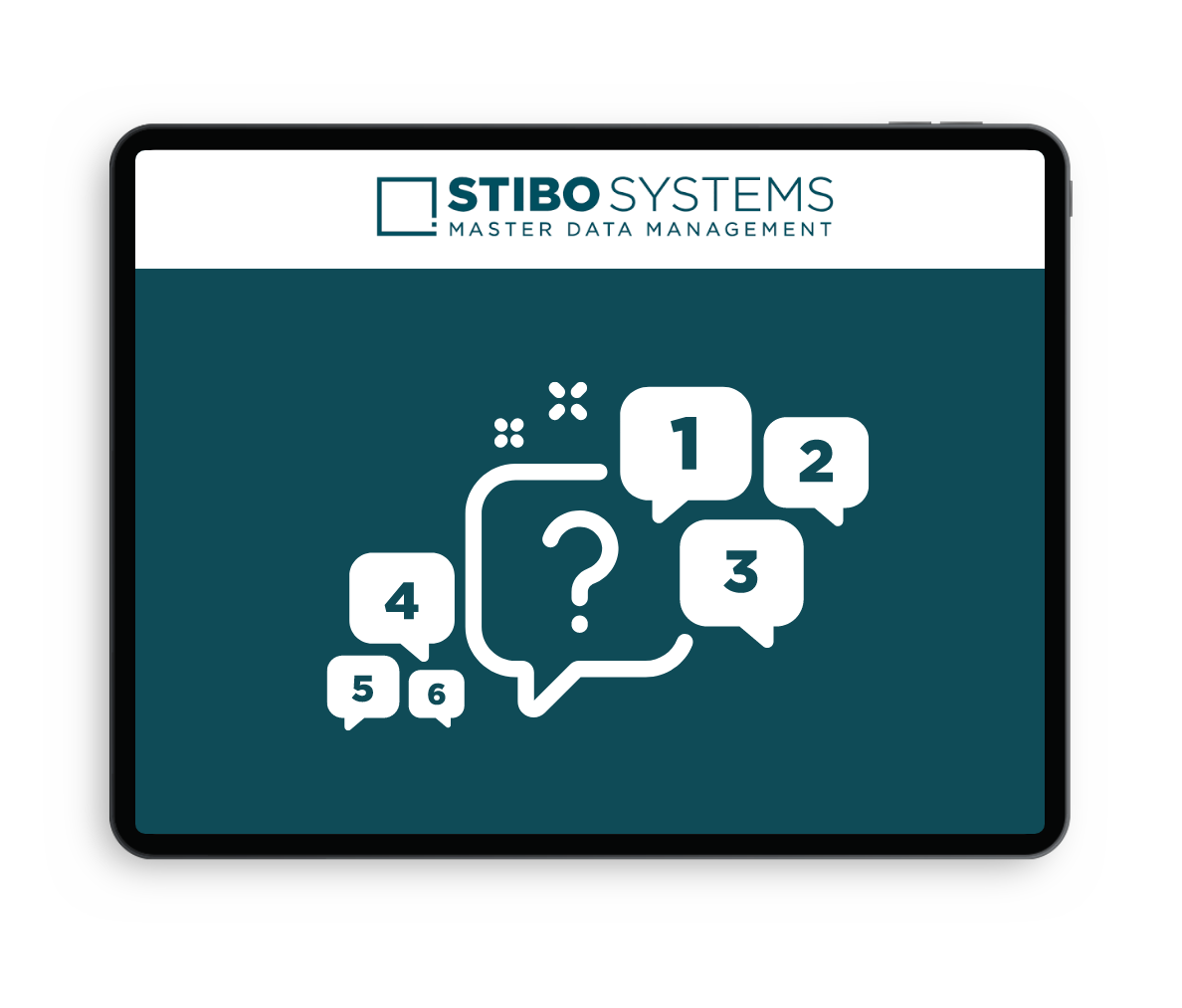Eight key focus areas for data governance
If you are a data and analytics professional in a medium-sized to large enterprise, data governance is hopefully not a new concept to you. However, new tools and new focus areas are emerging, adding additional layers of data and complexities to be dealt with in the organization.
We have gathered a few focus points for data governance to look out for in 2026, including compliance, sustainability reporting, the integration of AI, the increasing imperative for automation and master data governance, data productization, cloud computing and the call for broader data literacy.
The basic principles of data governance are the same as always – a combination of tools, people, processes and policies:
- A comprehensive data policy that has buy-in from C-level and down.
- People that can conduct data cleansing, modeling, validation and ongoing stewardship.
- Clear ownership of data, including who has the right to change or use data and for what purpose.
- Tools that have capabilities to support your data policy and enforce governance rules.

1. Compliance and regulation
In 2026, compliance and regulation remain key focus areas for data governance. According to Navex Global's 2023 Definitive Risk & Compliance Benchmark Report, 83% of risk and compliance professionals said that keeping their organization compliant with laws and regulations was a “very important” or “absolutely essential” consideration.
Regulations to protect data privacy and ensure transparency in data processing are being rolled out at a still faster pace, including GDPR, the US federal law to protect children’s personal data (COPPA) and an array of state laws in the US.
To comply with data privacy regulations, you would need a tool that can restrict access to personal information and store consent information along with it.
Manufacturers of consumer goods need to be aware of regulations such as the FDA's Food Safety Modernization Act (FSMA); and restaurants, as well as the entire hospitality sector, are obliged to inform about allergens and nutrients in their menus according to local laws.
As these regulations can change quickly, manufacturers and retailers need to have systems in place to facilitate the necessary transparency in an agile way.
Data governance is pivotal to ensure that product and personal information is updated with the correct regulatory attributes and used appropriately.
“The UK has introduced nutritional laws that restaurants need to display all nutritional information for everything they sell regarding food items and alcohol under 1.2%. This means at any digital point – Deliveroo, order-at-table, click-and-collect, etc. – the restaurants need to inform about calorie and allergen values so the guests can make informed decisions. This information is now all driven from the master data platform where it’s maintained and then pushed to all of the customer-facing applications, so that it is distributed to both printed menus and any point of order”. – Mark Jones, Head of Data Management at Mitchells & Butlers
Business transparency and data transparency go hand in hand. Compliance is only as transparent as the data being used to report and monitor it.
EXECUTIVE BRIEF
How to Develop Clear Data Governance Policies and Processes

2. Sustainability reporting
Governments around the world have become active in establishing sustainability-oriented laws and regulations for industries. This forward movement in regulation has helped raise the bar for manufacturers and retailers to be more committed to their sustainability goals.
Regulations can extend deeply into organizations, affecting various aspects such as water usage, building construction, recycling, energy sourcing and consumption, etc.
A vast array of sustainability reporting standards and certifications makes it a complex process to manage and govern the collection and reporting of sustainability data. This complexity has led to an explosion of additional data about products, suppliers and the extended supply chain, stores, manufacturing plants and processes.
The volume of additional ESG data to be collected and managed across multiple channels and reports has been significantly underestimated by Chief Sustainability Officers, who must urgently join forces with the Chief Data Officer to implement a data management strategy that underpins the ESG strategy.
More than 600 ESG standards exist today, each with subcategories and sector-specific processes, including:
- Sustainability Accounting Standards Board (SASB) with more than 77 different industries and over 30 disclosure statements in each document
- The Task Force on Climate-Related Financial Disclosures (TCFD) proposing a number of recommended disclosures around governance, strategy, risk management and metrics and targets
- The Global Reporting Initiative (GRI) operating across more than 140 different topics
- The UN Sustainable Development Goals encompassing 17 goals and 169 targets and indicators
- Digital Product Passport is the next sustainability requirement that needs effective data governance. Learn more about Digital Product Passports.
While driving a sustainable business is crucial, substantiating sustainability claims requires robust data management.
Effectively managing sustainability data demands the same level of rigor and discipline as managing other digital initiatives. Governing and consolidating your enterprise data can help streamline the management of sustainability data and facilitate reporting.
3. AI integration
Artificial Intelligence (AI) continues to evolve as a powerful force in data governance as AI-driven data governance tools are becoming more sophisticated, offering improved data classification, anomaly detection and predictive analytics capabilities.
The integration of AI into your data management systems not only streamlines governance processes but also enhances the overall quality and reliability of data.
AI-powered image recognition can help classify products; and generative AI is finding its way into data governance, for example in the entity matching and deduplication process. Companies that have the same customer recorded in several CRM systems need to consolidate their customer database by matching and merging customer records.
In many cases a record can contain too little detail to establish a firm identification in which case generative AI can be used to enhance the record and subsequently feed the governance process with a fuller data set for more accurate and reliable AI powered entity matching.
Data governance ensuring ethical AI. Getting any automated digital process to execute correctly needs a high degree of reliability on the underlying data.
To make the automation intelligent, it must be reliably aggregated with enough information to make the statistical patterns not only able to be analyzed, but also actionable. It’s crucial that AI-based data is governed, its decisions are explainable, and, for the time being at least, allows for human review and intervention.
STRESS TEST
Put your master data governance capabilitiesto the test

4. Automated data governance
With the rapidly increasing amount and complexity of data, manual data governance is no longer a feasible option. So, get rid of the spreadsheets, establish a collaborative data culture and see how you can incorporate automation into data governance practices.
This will help your organization achieve greater agility, reduce the likelihood of human error, and ensure that data is managed consistently and in alignment with established policies and standards.
Automation tools can continuously monitor and assess the quality of data, automatically detect and correct errors, inconsistencies and duplications in datasets, ensuring that data meets predefined quality standards.
A trending term is data observability, referring to a set of capabilities built into the data governance platform, such as:
- Anomaly detection – that notifies when data behaves outside the norm.
- Resolution – that can point to the root cause and help solve the problem upstream and downstream via data lineage.
- Prevention – that provides insight into areas requiring maintenance and special attention.
Automation can, in general, help enforce data policies by setting up alerts and automated responses when policies are violated and facilitating the orchestration of complex workflows involved in data governance.
5. Master data governance
In an era where data is experienced as often volatile and ambiguous, it is advisable to start with master data governance. Master data is low-volatility data that describes your assets, or the core building blocks (data domains), upon which your business is built. Some refer to master data as enterprise data.
It's the people, places and things that interact to create the process of doing business. Examples of master data domains include customers, products, suppliers, physical stores and locations, employees and major assets.
Master data governance is becoming more important in 2026 and beyond because it ensures a trusted, single view of your assets and therefore establishes a counterweight to the general volatility and disparity of data that is often sitting in different systems and pulled from sources with varying formats.
When enterprises grow bigger, their data landscapes become more complex. Master data governance allows a glossary of agreed terminology to be created along with metadata attributes which are used to define an asset and provide a standard and consistent definition across the organization.
Business rules, polices, data quality validity checks and enforced workflows provide the guardrails needed to reduce the scope for misinterpretation, misuse, confusion and errors in the future.
KNOWLEDGE HUB
Master Data Governance resource library

6. Data productization
Data governance plays a pivotal role in the creation of data products as the output of a data mesh architecture. The data mesh approach is gaining momentum as an alternative to the traditional single data team overseeing a data warehouse and responding to requests, which can become a bottleneck.
Instead, a data mesh enables agility as it emphasizes the decentralization of data ownership and governance where individual teams create data products for consumption in other parts of the enterprise, e.g., dashboards, analytics models, chatbot systems or recommendation engines.
Creating data products requires that the teams adhere to certain governance principles, such as data collection, modeling, transformation, ownership and metrics in order to design the products to meet the specific needs of consumers.
7. Cloud computing
In harmony with the AI and automation trends, cloud computing is playing an increasing role in supporting data governance strategies.
Cloud-based data governance solutions offer enhanced accessibility, collaboration and real-time updates, facilitating seamless governance across geographically dispersed teams.
Flexible cloud resources enable organizations to adapt quickly to changing data governance requirements and business needs.
Cloud platforms often come with built-in or third-party tools for automated data governance, including metadata management and data quality monitoring. Regarding data security, cloud providers offer robust disaster recovery and backup solutions, reducing the risk of data loss and ensuring business continuity in case of unexpected events, features that contribute to data governance by providing mechanisms to safeguard critical data and maintain data availability.
8. Fostering general data literacy
As enterprises rely more and more on data-driven decision-making, it is becoming paramount that every employee understands the language of data and the necessity of data governance.
A common understanding of data governance has the advantage of making new digital initiatives more palatable and data sharing (and hence collaboration) easier. Historically, in most companies, data has been stored, analyzed and used on a departmental basis. Although many believe they share data internally, in reality, each department or division retains control and visibility of the data, often leading to siloed decision making.
As data continues to grow and flow at a rapid pace, data leaders need to make more qualified decisions based on data from across the enterprise and stakeholders who share a collective understanding of that data. Outdated data handling processes pose severe limitations for business leaders who need to make decisions based on a unified and single version of the truth across the enterprise.
Democratizing data is only possible if data is governed. That includes its quality and sources, how it is shared and used, and who is accountable for the data quality as well as for the interpretation of the data.
To gain organizational buy-in, it’s crucial to establish a data culture, where everyone is invested in data quality and accountability. As employees begin to recognize the benefits of data governance, they will see it not as a burden but a business enabler that helps everyone and they will champion it further.




































































































































































































